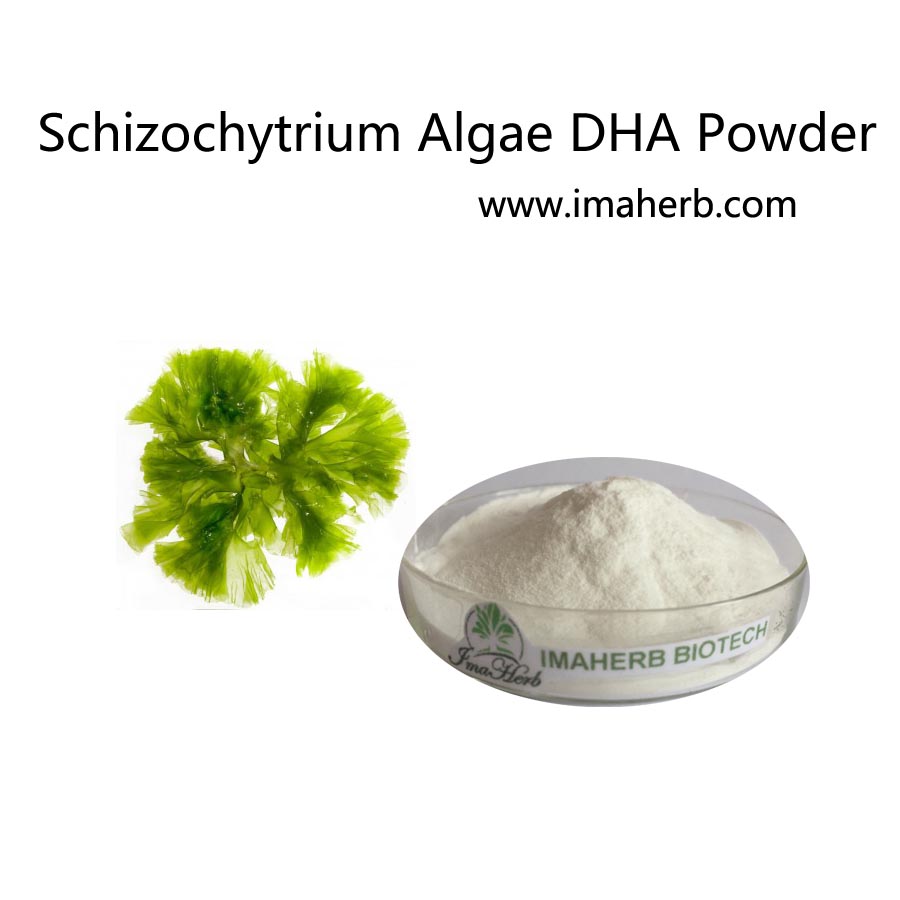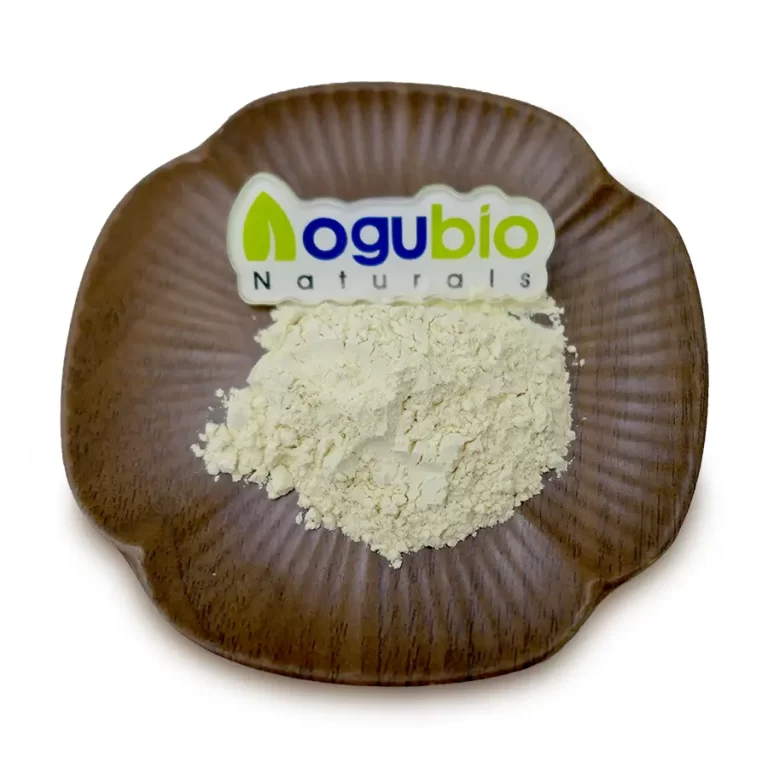Product Name:Schizochytrium Algae DHA Powder
Other Name: Cervonic acid, DHA Powder
Specs:DHA Powder7%, 10%
DHA oil 35%,40%,50%,
Appearance:White to Light Yellow Powder or oil
Odor:Characteristic
CAS No:6217-54-5
Molecule Formula: C22H32O2
Molecule Weight: 328.49


What is Schizochytrium Algae DHA Powder?
Docosahexaenoic acid (DHA) is an omega-3 fatty acid that is a primary structural component of th cerebral cortex, skin, sperm, testicles and retina. It can be synthesized from alpha-linolenic acid or obtained directly from maternal milk or fish oil.DHA’s structure is a carboxylic acid(~oic acid) with a 22-carbon chain and six cis double bonds .the first double bond is located at the third carbon from the omega end.[3] Itstrivial name is cervonic acid, its systematic name is all-cis-docosa-4,7,10,13,16,19-hexa-enoic acid, and its shorthand name is 22:6(n-3) in the nomenclature of fatty acids.
Schizochytrium Algae DHA Powder Application:
The essential n-3 fatty acid α-linolenic acid (C18:3) serves as an energy carrier and precursor for the synthesis of EPA (C20:5) and DHA (C22:6) into which it is converted by chain elongation and introduction of extra double bonds. EPA is an important component of the phospholipids of cell membranes and lipoproteins. It also serves as a precursor in the synthesis of eicosanoids, which have a regulatory function on tissue hormones. DHA is a structural component in the cell membranes, particularly the nervous tissue of the brain, and plays an important role both for the synapses and the cells of the retina.
The conversion of α-linolenic acid to its long-chain derivatives EPA and DHA may not be sufficient to maintain optimal body functions. The limited conversion is mainly due to a dramatic change in eating habits during the past 150 years, resulting in increased n-6 PUFA intake and concomitant decrease in n-3 LCPUFA consumption in most industrialized countries. Therefore, the n-6 to n-3 ratio in our diet has changed from 2:1 to about 10 – 20:1. This change accounts for the inadequate biosynthesis of the biologically active n-3 PUFA, EPA, and DHA, as n-6 and n-3 PUFA compete for the same desaturase and elongase enzyme systems.
EPA-derived eicosanoids affect immunological processes and fulfill anti-inflammatory functions. In addition, n-3 fatty acids have “noneicosanoid” functions attributed to their physical properties. They are able to modify the membrane fluidity, which is of particular relevance in terms of erythrocytes.


















 skype
skype Sales Manager
Sales Manager Rebekah
Rebekah Rachel
Rachel Miranda
Miranda Camilla
Camilla
 Sales Manager
Sales Manager